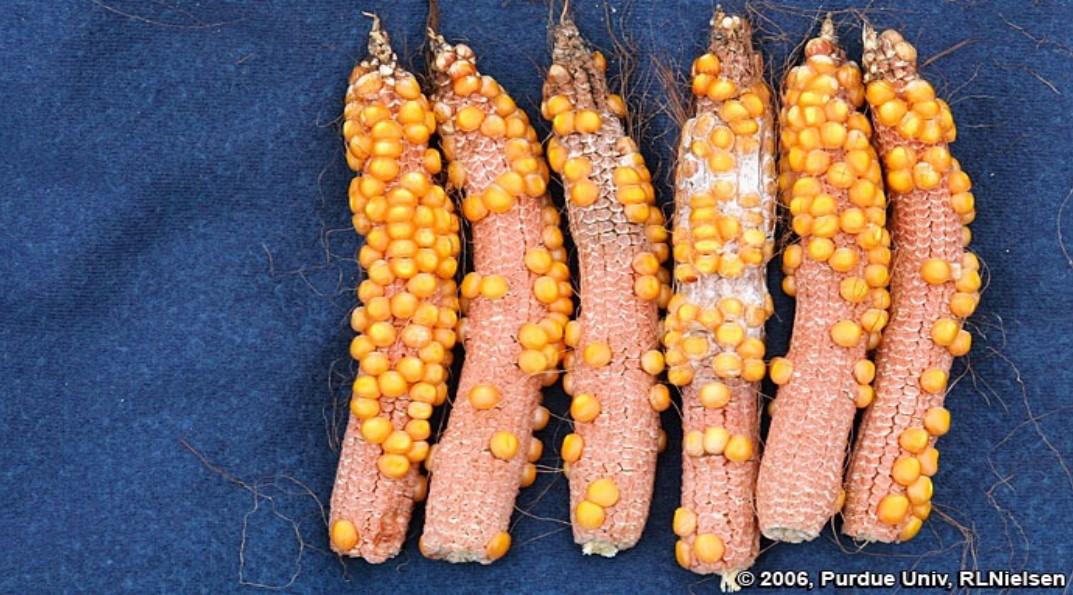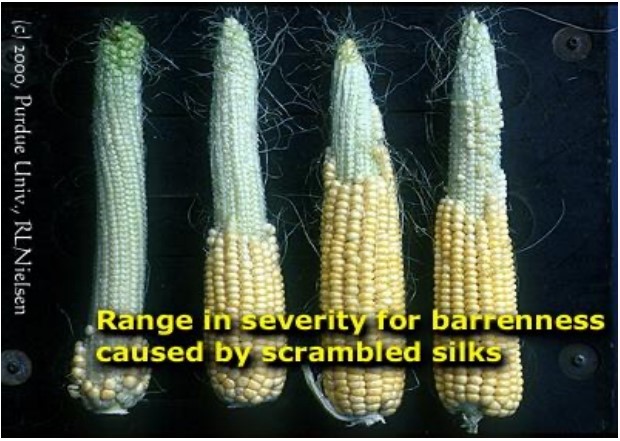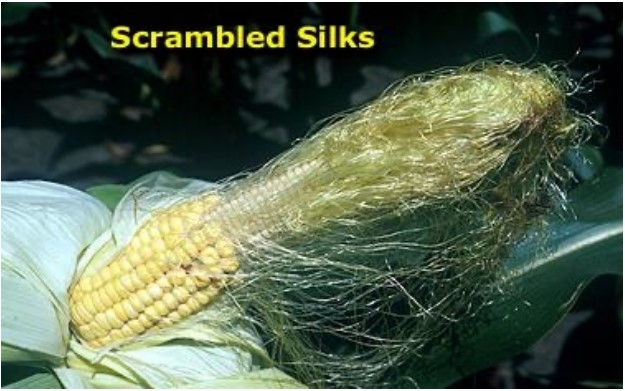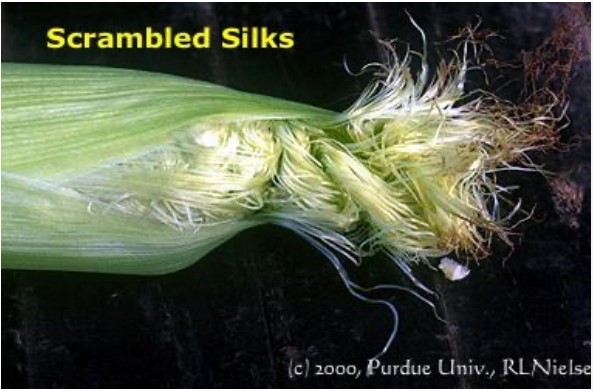What is silk jamming?
This phenomenon occurs when the silks are supposed to appear at the tip of the cob and the elongation of the silks is obstructed by husk leaves that are packed too tightly at the tip of the ear, or when a cultivar produces long husk leaves. The silks then curl up into a ball at the top of the cob without emerging from the tip of the ear.
Complete silk emergence generally occurs within four to eight days after the first silks start to emerge from the husk
leaves. The degree of poor pollination depends on the time when the silk blockage occurred – the earlier it happens,
the more serious the damage is.
The photograph below depicts silk jamming that occurred at different times during the pollination period.
What causes silk jamming?
The main cause of silk jamming is fluctuating temperatures.
The occurrence of cold nights during the pollination period increases the risk of silk jamming.
What could be determined is where day and night temperatures differ by more than 10°C, it tends to increase the occurrence of silk jamming.
Note that the maize plant is very adaptable and can, to some extent, compensate for the loss of kernels on the cob if good growing conditions are present during grain filling.
Know the difference
The photograph below does not indicate silk jamming, but poor pollination due to adverse climate conditions. Applying a fungicide, a week before and after pollination, can also intensify this effect.
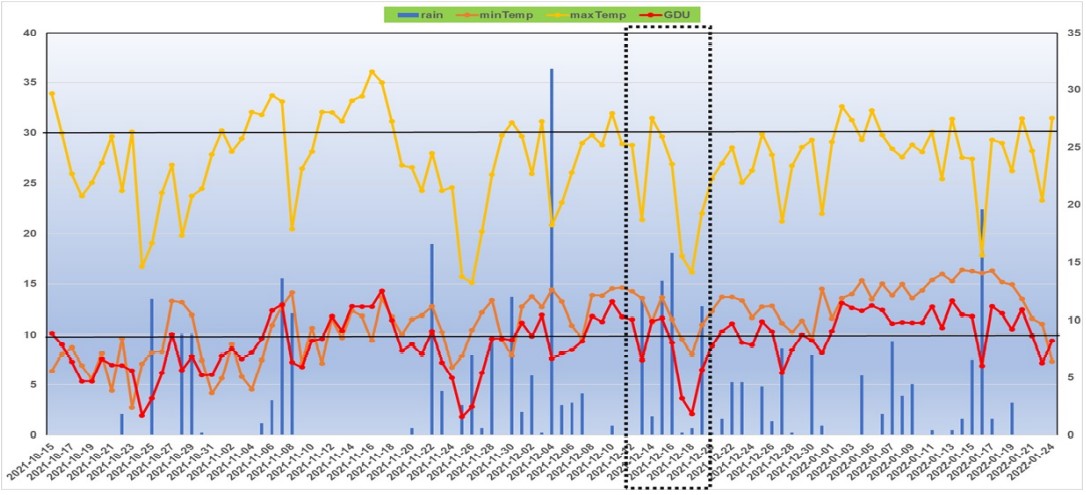

References
https://www.agry.purdue.edu/ext/corn/news/articles.00/SilkBalling-0718-Gallery.html
http://corn.agronomy.wisc.edu/Management/L018.aspx
https://www.pannar.com/blog/detail/silk_jamming_silk_balling_scrambled_silks_a_problem_or_not
https://agcrops.osu.edu/search/site/specialists%20corn%20specialist%20announcements%20ear%20abnormalities

